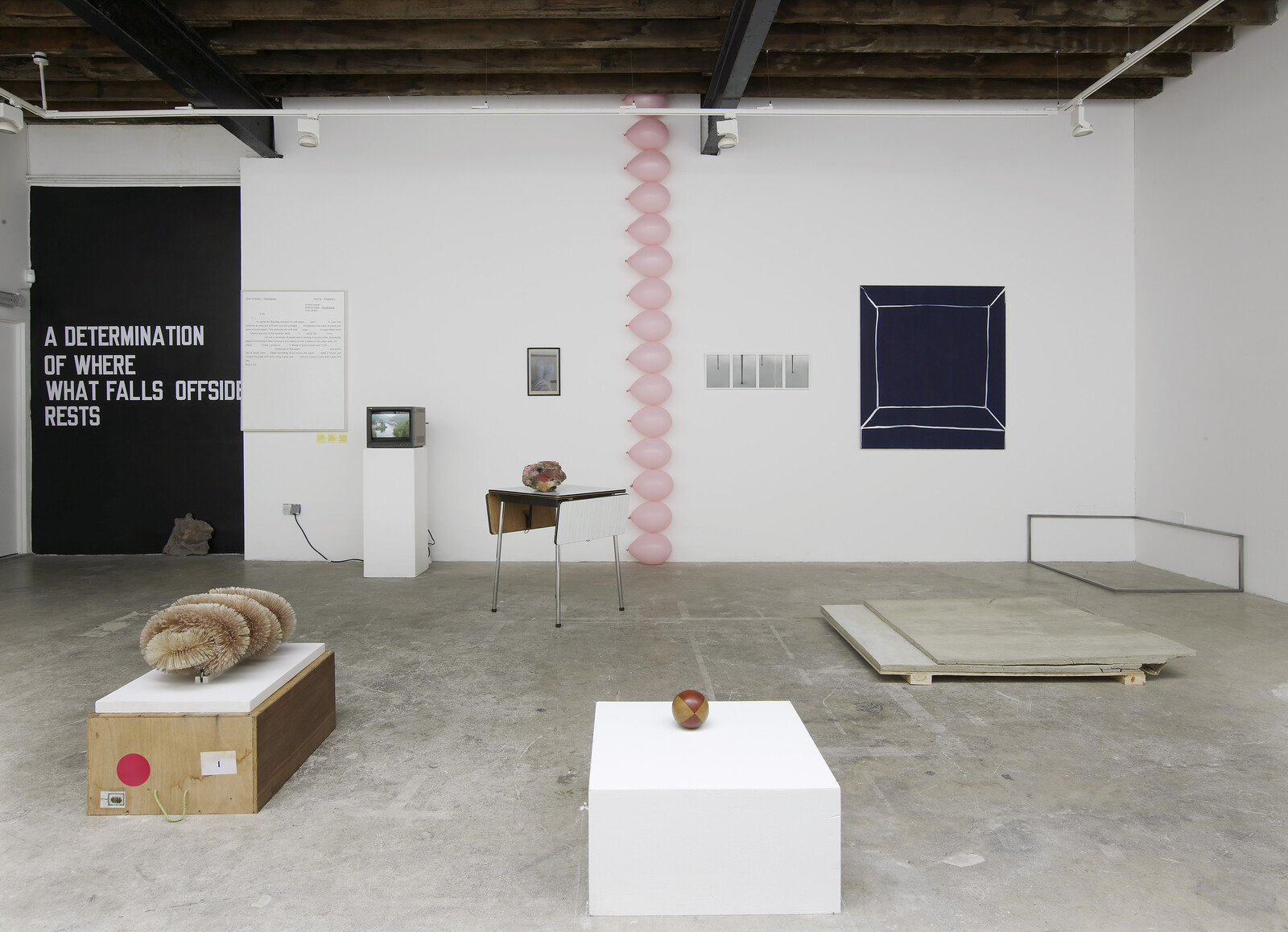With Vanessa Billy, Cathy Wilkes, Karin Lehmann, Alice Browne, Phyllida Barlow, Joanna Slusarczyk, Lucy Clout, James L. Mathewuse, Rehana Zaman, Sean Edwards, Lawrence Weiner, An Endless Supply, Matt Golden, John Frankland, Natsue Ikeda, Matthew Richardson, Chris Evans, Rachal Bradley, Matthew Smith, Carl Plackman, James Torble, Jack Strange, Fischli & Weiss, Esmeralda Valencia Lindström, Santo Tolone, Pino Pascali, Mauro Vignando, Yonatan Vinitsky, Rupprecht Geiger, and Antal Biro
The pithy press release of Limoncello’s exhibition “We Love You” promises “an exhibition in which each Limoncello artist has chosen an artist who has influenced them and an artist they would put money on for the future.” Not a boundary-breaking concept by any means as it could have easily been replaced by the phrase “artists artists like,” and yet not a bad way to open a new space if you are out to establish influences, trace legacies, and test out some new names along the way.
The gallery, which succeeded the year-long project Associates founded by artist Ryan Gander, recently left the former East London hotspot Hoxton for a larger space up the road in the new East London hotspot Dalston. Remaining from its “Associates” days is a selection of the artists and an appreciation for emerging and less-commercial oriented practices. “We Love You,” the first presentation in the new space, is a visually cluttered and at times unfortunately displayed show. The show on the whole would have benefited from a reduced selection; the crammed arrangement fluctuates between an MFA show and an over-ambitious art fair booth. The exhibition has a kaleidoscopic feel to it that skews and obscures its layered concept. Similar to a game of memory, the visitor is left to piece together the various groupings, and, although tiresome, it is certainly a rewarding exercise to reassemble the spatially broken up trios according to their amorous liaisons, leading to intriguing connections within the groups and beyond.
One such grouping is Vanessa Billy, Cathy Wilkes, and Karin Lehmann: staple artist Billy selected Wilkes as an influence and Lehmann as someone to watch out for. The combination succeeds beyond formal bounds. Despite its humble size and discrete presence, Billy’s work Awash (2011) stands out from the rest of the show. Placed unassumingly on the floor of the gallery, a common rock, roughly of the size of a cantaloupe, is wrapped in a used grey towel spotted with dirt. The surface of the rock bears remnants of moss and earth that are mirrored nicely by the freckled golden spills on the rust-soiled towel. The piece limns a rather casual gesture, flaunting an ambiguity between informal care and cast-aside-ness that corresponds nicely with Lehmann’s Fair Dinkum (2012), a rusting bronze cast of a wrinkled piece of cloth, leaning nonchalantly against a text piece by Lawrence Weiner. It is a rough, unpolished cast whose petrified creases defy the gravity that its orientation would naturally respond to. Also Wilke’s piece ponders on strategies of masking, albeit paired with stoic humor. The polymer gravure titled Dadder (2010) shows a photograph of a room—maybe a studio or kitchen—composed of superimposed, differently colored, and slightly offset layers. All three works appear to hold an arrested motion, like a deep breath petrified, holding out for what’s to come. They also demonstrate a playful way with words, their titles serving as enigmatic entries to the works.
Interesting ties can also be found between Santo Tolone and his choice of Pino Pascali and Mauro Vignando, a trio that shares an intriguingly humorous take on objects and situations. Ditto that thought with the works by Carl Plackman, Chris Evans, Matthew Richardson, and Matt Golden, works that mischievously question behavioral automatisms, uncovering humor in absurd routines. Unfortunately, none of the selections are particularly surprising or outrageous; it’s much more a well-tempered hodgepodge with the occasional highlight.
In general, the concept of the artists-selecting-artists show feels well-trodden and thoroughly exhausted. Although a telling trend barometer, such shows rarely lead to anything more than mood boards, snapshots of a given circle, cliques. Relinquishing responsibility from a proper theme certainly does little to stir up power dynamics. Despite some interesting insights, one ends up with a plate from the buffet, a little bit of everything. “We Love You” is no exception, a show which does what it set outs to do, outlining the trends and reference points of 10 artists from an East London gallery. The outcome is certainly nothing visionary, but, nevertheless, it offers up a lot more than most MFA shows presented in London this year, and that, after all, is something.





